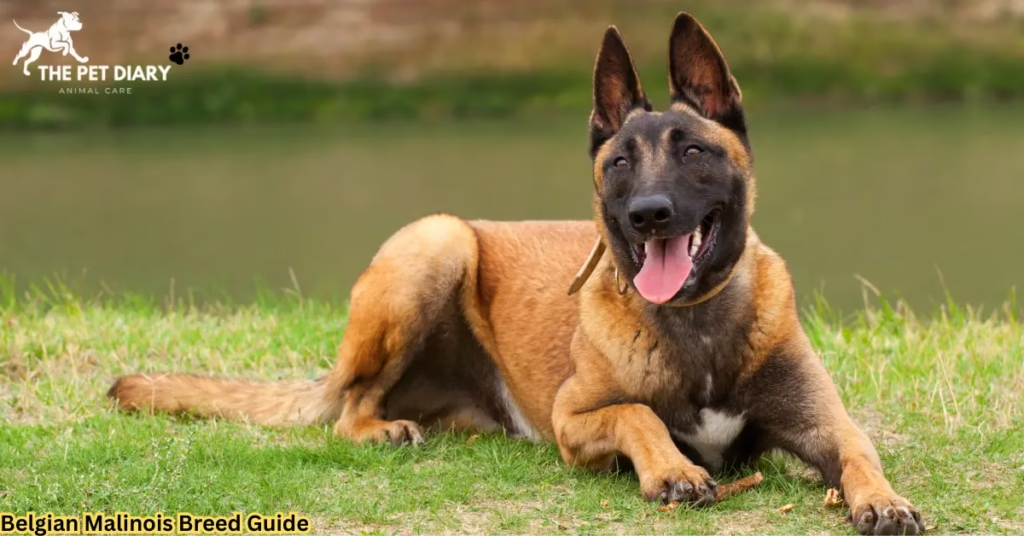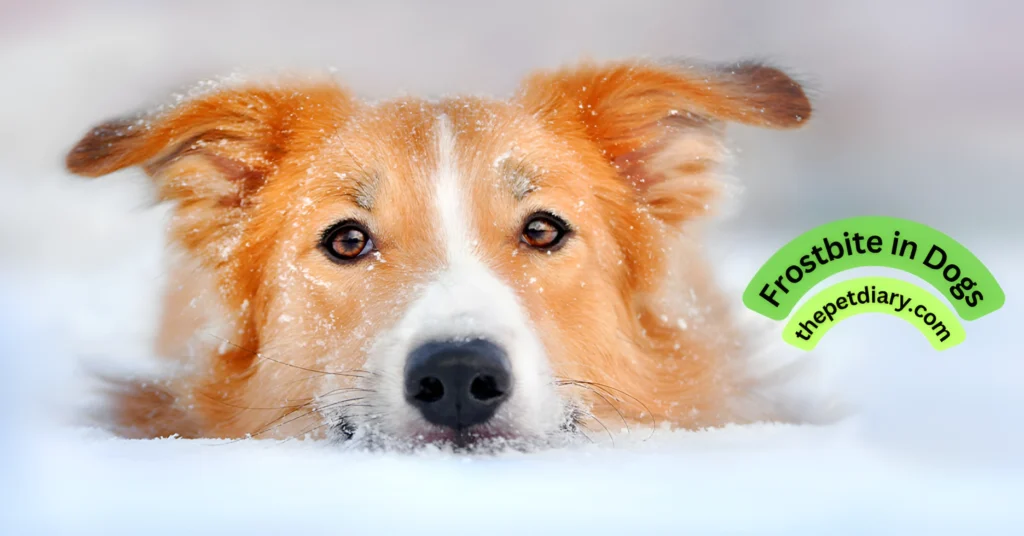Introduction to the Belgian Malinois
The Belgian Malinois is a highly intelligent, energetic, and loyal working dog that has captured the attention of professional trainers, law enforcement agencies, and active families alike. Known for its striking appearance and incredible drive, this breed originated in Belgium and was originally developed as a herding dog. The Belgian Malinois Breed Guide shows how today, it excels in police work, search-and-rescue operations, competitive obedience, and as a devoted family companion, provided its owners can meet its high exercise and mental-stimulation needs.
Many people first notice the Malinois Belgian Shepherd dog for its sleek, athletic frame and alert expression. Whether you’re searching for a Belgian Malinois puppy, curious about a black Belgian Malinois, or exploring different mixes such as a German Shepherd Belgian Malinois mix, this comprehensive guide covers everything you need to know.
Breed Origins and History
The Belgian Malinois belongs to the family of four Belgian herding breeds. The Tervuren, Laekenois, Groenendael, and Malinois. Named after the city of Malines in Belgium, the breed was prized by farmers for its ability to herd sheep with minimal guidance.
By the late 19th century, Belgian breeders formalized the breed standard, emphasizing agility, endurance, and a strong work ethic, traits still evident in the modern Belgian Shepherd Malinois.
During the 20th century, the breed’s exceptional intelligence and trainability drew attention from law enforcement and military organizations worldwide. Today, Malinois dogs are commonly seen in K-9 units, detection work, and even elite military operations.
Key Physical Characteristics – Belgian Malinois Breed Guide
The Belgian Malinois dog is medium-sized, with males typically standing 24–26 inches tall and females slightly smaller. Their short, straight coat lies close to the body and usually appears in rich fawn to mahogany colors with a black mask.
A rare but striking variation is the black Belgian Malinois, which displays an all black coat while retaining the same athletic build.
| Characteristic | Male Range | Female Range |
|---|---|---|
| Height | 24–26 in | 22–24 in |
| Weight | 60–80 lbs | 40–60 lbs |
| Average Lifespan | 12–14 yrs | 12–14 yrs |
| Exercise Requirement | 90+ min daily | 90+ min daily |
These physical traits make the Malinois exceptionally suited for tasks that demand speed, agility, and endurance.
Temperament & Personality in the Belgian Malinois Breed Guide
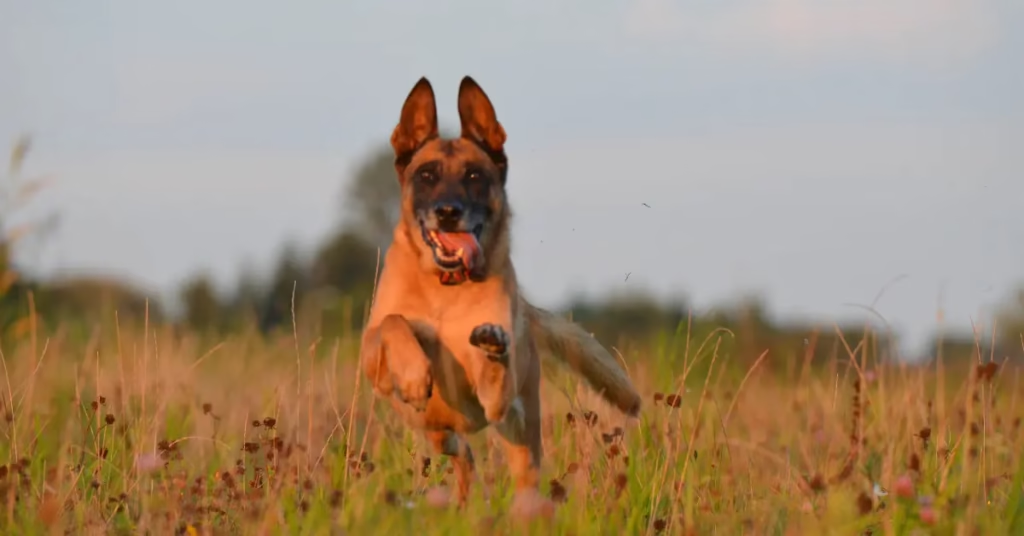
The Belgian Malinois is renowned for its unwavering loyalty and keen protective instincts. Owners describe the breed as:
-
Intelligent and Quick-Learning: Capable of mastering advanced commands and complex tasks.
-
Energetic and Playful: Requires vigorous daily exercise such as running, agility training, or fetch.
-
Alert and Protective: Naturally watchful, making them excellent guard dogs when properly trained.
-
Affectionate with Family: Strongly bonds with its household, especially when socialized early.
However, this breed is not ideal for sedentary lifestyles. Without proper exercise and mental stimulation, a Malinois can develop destructive behaviors. Consistent Belgian Malinois training from puppyhood is essential.
Early Training and Socialization
Why Training Matters
The Malinois’s intelligence is a double-edged sword: it learns quickly, but it also becomes bored just as fast. Structured obedience sessions, puzzle toys, and interactive games help channel that energy positively.
Key Training Tips
-
Start Young: Enroll your Belgian Malinois puppy in obedience classes by 8–10 weeks.
-
Positive Reinforcement: Reward good behavior with treats and praise.
-
Consistency is Crucial: Set clear boundaries and maintain a routine.
-
Socialization: Introduce your dog to new environments, people, and animals early on.
For owners who prefer professional guidance, many cities offer Belgian Malinois training near me programs that specialize in high-drive working breeds.
Bite Force and Working Ability
The Belgian Malinois bite force averages around 195–225 PSI, making it strong enough for protection work without the excessive pressure of larger breeds like the Mastiff. This balance of power and control is one reason the Malinois is favored in police and military operations.
Health and Nutrition
A well-balanced diet and regular veterinary care are key to keeping a Belgian Malinois healthy and energetic throughout its 12–14-year lifespan.
Common Health Concerns
Although generally robust, the breed can be prone to certain conditions:
-
Hip and Elbow Dysplasia: Maintain a healthy weight and schedule regular screenings.
-
Progressive Retinal Atrophy (PRA): Ask breeders for eye-health certifications.
-
Allergies and Skin Issues: Provide a high-quality diet and avoid harsh grooming products.
Routine checkups every six months help catch issues early.
Ideal Nutrition/ Belgian Malinois Breed Guide:
Feed a high-protein diet formulated for active dogs. Adult Malinois typically require 1,200–1,800 calories per day, depending on activity level. Split meals into two servings to reduce bloating risk.
| Life Stage | Protein % | Fat % | Feeding Frequency |
|---|---|---|---|
| Puppy | 26–28% | 16–20% | 3–4 small meals |
| Adult | 24–26% | 14–18% | 2 meals |
| Senior | 22–24% | 12–16% | 2 meals |
Grooming and General Care – Belgian Malinois Breed Guide
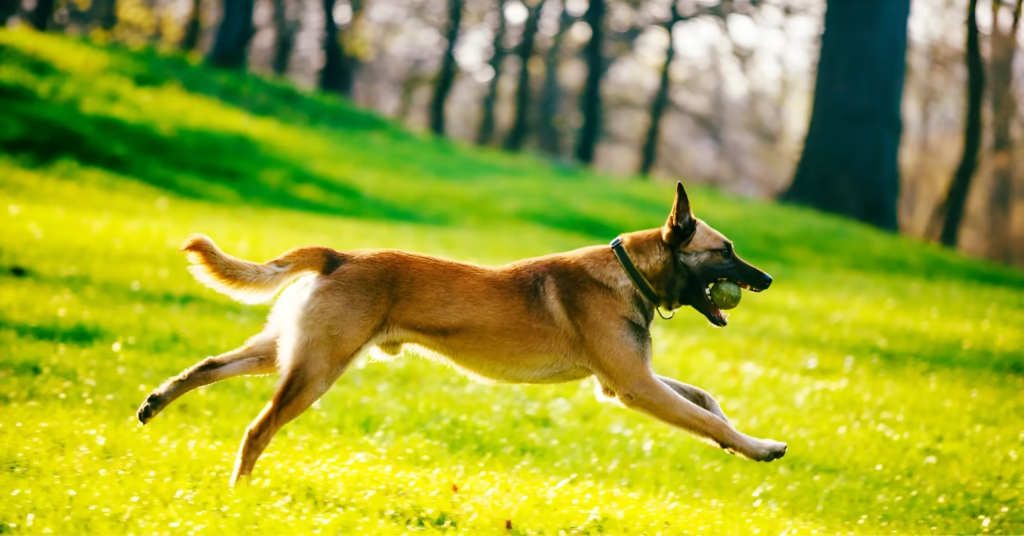
Despite its double coat, the Belgian Shepherd Malinois is relatively low-maintenance:
-
Brushing: Weekly during most of the year; daily during shedding seasons.
-
Bathing: Every 6–8 weeks or when dirty.
-
Nail Trimming: Every 3–4 weeks to prevent overgrowth.
-
Dental Care: Brush teeth several times per week.
This routine keeps your female Belgian Malinois or male equally clean and comfortable.
Exercise Needs of the Belgian Malinois Breed Guide
The Malinois thrives on physical and mental activity. Plan for at least 90 minutes of vigorous exercise daily:
-
Jogging or cycling alongside you
-
Agility or flyball competitions
-
Structured play such as frisbee or advanced fetch
-
Scent-tracking games or puzzle feeders
Without this outlet, a Belgian Malinois dog can become restless and destructive.
Finding a Belgian Malinois Puppy
Responsible Breeders
When searching for a Belgian Malinois puppy for sale, prioritize breeders who:
-
Provide health certificates for hips, elbows, and eyes
-
Allow you to meet the puppy’s parents
-
Offer early socialization and vaccination records
Use regional directories to locate Belgian Malinois breeders near me or consider reputable Belgian Malinois breeders Europe if you’re overseas.
Rescue Options
Adopting from a Belgian Malinois rescue is a rewarding way to give a loving home to an adult dog. Rescue organizations often provide basic obedience training and health evaluations.
Pricing and Ongoing Costs
How much is a Belgian Malinois dog? Prices vary by location and lineage:
| Category | Typical Cost (USD) |
|---|---|
| Pet-quality puppy | $1,200 – $2,000 |
| Show or working-line puppy | $2,000 – $3,500 |
| Adoption fee (rescue) | $300 – $600 |
| Annual care (food, vet, etc.) | $1,000 – $1,800 |
Remember that training classes, especially professional Belgian Malinois training near me, are an additional but essential investment.
Popular Mixes and Variations
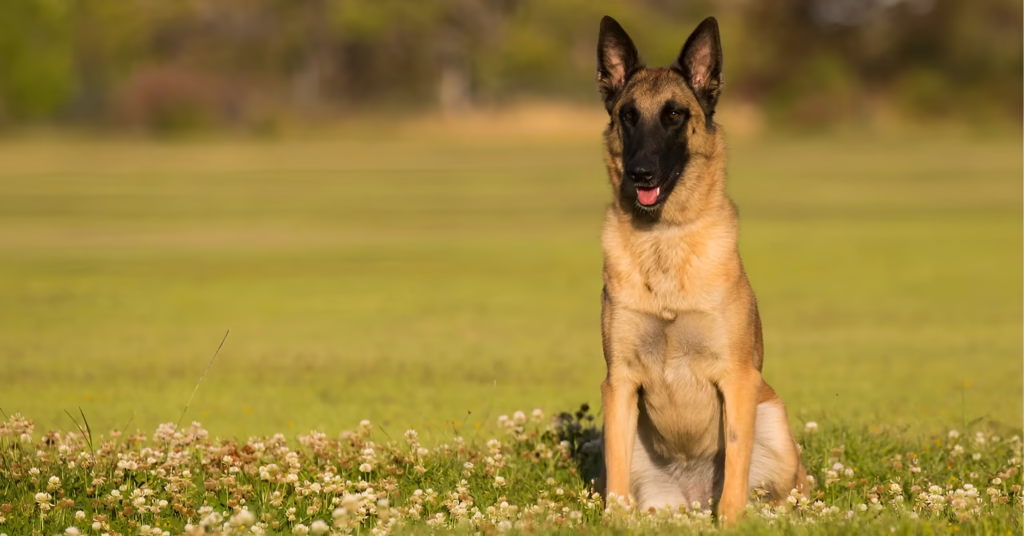
The breed’s strong genetics have produced several fascinating mixes:
-
German Shepherd Belgian Malinois mix: Combines loyalty with added size and strength.
-
Belgian Malinois Husky mix: High energy with striking coat patterns.
-
Belgian Malinois Pitbull mix: Muscular build and strong protective instincts.
-
Belgian Malinois Lab mix: Balanced temperament and family-friendly.
-
Rare black Belgian Malinois puppy: Unique all-black coat.
Each mix inherits the Malinois’s intelligence and drive, so training and exercise remain critical.
Breed Comparison: Dutch Shepherd vs Belgian Malinois
| Trait | Belgian Malinois | Dutch Shepherd |
|---|---|---|
| Origin | Belgium | Netherlands |
| Size | Medium | Medium |
| Coat | Short, fawn w/ black mask | Brindle, short/long |
| Energy Level | Very High | High |
| Guarding Instinct | Strong | Moderate |
| Training Difficulty | Moderate–High | Moderate |
While both are exceptional working breeds, the Malinois typically exhibits more intensity and focus.
Living with a Belgian Malinois
Owning a Belgian Malinois is a lifestyle choice as much as it is a pet decision. Because this breed thrives on activity, you’ll need to create an environment that matches its energy.
Home Environment
-
Space: A fenced yard is ideal, but an apartment can work if you commit to multiple long daily walks and vigorous play sessions.
-
Climate: Their double coat provides insulation, so they tolerate both warm and cold weather when properly acclimated.
-
Family Setting: Early socialization ensures a Belgian Malinois puppy grows into a dog that bonds well with adults and respectful children.
Compatibility with Other Pets
The Malinois generally gets along with other dogs if introduced correctly, but its strong herding instincts can make it chase cats or smaller animals. Supervised introductions and consistent boundaries are essential.
Advanced Belgian Malinois Training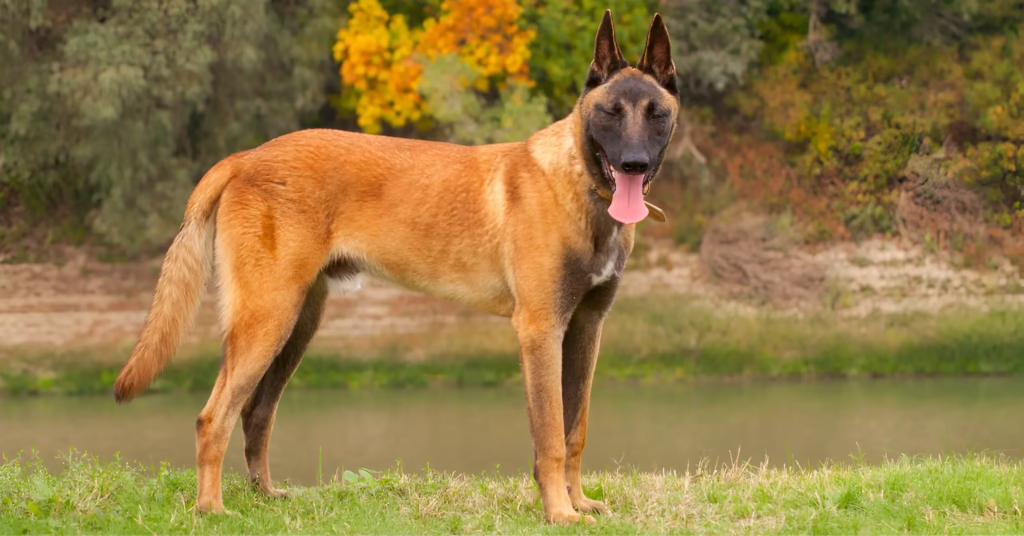
Once you’ve mastered the basics, take training to the next level to keep your Malinois Belgian Shepherd dog challenged.
Specialized Skills/ Belgian Malinois Breed Guide:
-
Agility Courses: Ideal for harnessing speed and focus.
-
Scent Work: Engage the dog’s powerful nose with tracking or search-and-rescue games.
-
Protection Sports: Activities like Schutzhund build obedience and confidence when taught by certified trainers.
Tips for Success
-
Consistency & Variety: Rotate exercises to prevent boredom.
-
Professional Help: Enroll in specialized Belgian Malinois training or advanced obedience classes.
-
Positive Reinforcement: Reward desired behaviors with treats, praise, or playtime.
Owners seeking convenient options often search for Belgian Malinois training near me to find local experts experienced with high-drive working breeds.
Travel and Outdoor Adventures
Because of its stamina and enthusiasm, the Malinois makes a perfect companion for outdoor enthusiasts.
-
Hiking & Camping: Their endurance and protective instincts suit long treks.
-
Canine Sports: Activities such as flyball, dock diving, or frisbee tournaments keep them engaged.
-
Travel Prep: Provide secure harnesses and plenty of water. Familiarize your dog with vehicles early for stress-free trips.
Belgian Malinois Breed Guide: Grooming on the Go
Traveling with a Belgian Malinois dog requires portable grooming tools:
-
Collapsible water bowls
-
Compact brush for shedding
-
Paw balm for rough terrain
A quick daily brush prevents mats and keeps your female Belgian Malinois or male looking sharp, even on extended adventures.
Community and Social Life-Belgian Malinois Breed Guide
The Malinois thrives when it feels part of a “pack,” which can include family members, fellow dogs, or training clubs.
-
Dog Sports Clubs: Great for structured exercise and socialization.
-
Obedience Competitions: Showcase your dog’s intelligence and precision.
-
Rescue & Adoption Events: Connect with others who have welcomed a Belgian Malinois rescue into their homes.
Engaging in these activities not only keeps the dog happy but also strengthens the human–canine bond.
Summary of Key Care Points – Belgian Malinois Breed Guide
-
Daily Exercise: Minimum 90 minutes of high-energy activity.
-
Mental Stimulation: Training games and puzzle toys.
-
Nutrition: High-protein diet suited to activity level.
-
Health: Regular vet checks and hip/eye screenings.
-
Training: Consistency and positive reinforcement from puppyhood.
Final Care Checklist:
Use this quick reference to keep your Malinois Belgian Shepherd dog healthy and happy:
Care Element Key Recommendations Exercise 90+ minutes of high-energy activity every day Training Start at 8–10 weeks, continue with advanced work Diet High-protein food, split into 2 meals Grooming Weekly brushing; daily during shedding Veterinary Checks Twice-yearly exams; hip/eye screenings Key Takeaways for Future Owners
-
The Belgian Malinois is a loyal, athletic, and intelligent companion best suited for active households.
-
Proper Belgian Malinois training—whether at home or with a professional—is essential to channel its strong drive.
-
Adoption through a Belgian Malinois rescue or reputable breeder ensures you start with a healthy, well-socialized dog.
-
From the rare black Belgian Malinois to mixes like the German Shepherd Belgian Malinois mix, each variation retains the hallmark traits of courage, agility, and devotion.
Closing Thoughts of Belgian Malinois Breed Guide:
The Belgian Malinois Breed Guide highlights a breed celebrated for unwavering loyalty, exceptional intelligence, and boundless energy. Whether you’re considering a Belgian Malinois puppy, researching a female Belgian Malinois, or curious about the unique Belgian Malinois bite force, this dog demands commitment and rewards it with steadfast companionship.
If you can match the breed’s need for exercise, training, and mental stimulation, the Belgian Malinois will repay you with years of protection, love, and adventure. Visit ThePetDiary.com.
FAQS of Belgian Malinois Breed Guide:
1. How do you pronounce Belgian Malinois?
It’s MAL-in-wah—a French-influenced name that often surprises first-time owners.
2. How much is a Belgian Malinois dog on average?
Expect to pay $1,200–$3,500 for a well-bred Belgian Malinois puppy for sale, depending on lineage and breeder reputation.
3. Are black Belgian Malinois purebred?
Yes. A black Belgian Malinois puppy is rare but recognized when bred from registered parents.
4. Is a Malinois good for families with children?
Yes, provided the dog receives proper early training and daily exercise. Supervision with small children is recommended.
5. Can they live in apartments?
Yes, but only if owners commit to at least 90 minutes of vigorous exercise each day.
6. What’s the difference between a Belgian Shepherd Malinois and other Belgian Shepherds?
The Malinois has a short coat and is bred primarily for working roles, while Tervuren, Groenendael, and Laekenois varieties differ in coat length and texture.
-
